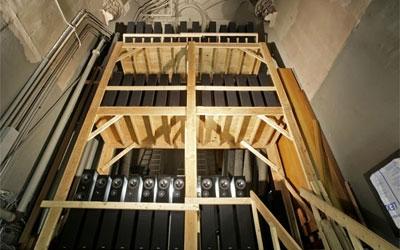Installations: A Higher Power

Cathedrals are almost preternaturally quiet havens where even the softest whispers, shuffling in the pews, or footsteps across marble floors can seem blasphemously loud. Definitive Technology products might be the exact opposite: The company's monolithic tower speakers are known for producing rock-concert levels of sound and have long been lauded by audio and home-theater enthusiasts alike.
So when I heard that a church had turned to Def Tech for an audio system, I assumed that a few monitors had been discreetly placed to amplify the choir or the minister. But then I heard that the system contained a total of 82 audio channels - including 76 Def Tech bipolar towers powered by over 16,000 watts of amplification. And as if that wasn't enough, company president Sandy Gross told me the church was "totally overdriving" its SuperCube Reference subwoofers - so Def Tech responded by creating a new breed of subwoofer, capable of phenomenal output: more than 128 dB at 20 Hz and 116 dB at 16 Hz. And the sub bears the church's name. (See "Subwoofer of the Gods".)
I knew this was a story that had to be told.
Churchgoers whose services are accompanied by a pipe organ are fortunate indeed. Of all the musical instruments, pipe organs dig the deepest, plumbing the lowest depths of the frequency range to produce truly subsonic sound. Trinity Church in lower Manhattan featured such an organ. Built by the Aeolian-Skinner Organ Company in 1970, it was one of the largest in New York City, with (yes) 9,000 pipes that ranged from 2-inch tubes to mammoth 32-footers capable of producing 16-Hz notes!
But everything changed at Trinity on September 11, 2001. The church is located just 600 feet from Ground Zero, and the collapse of the World Trade Center caused the sanctuary to become filled with a noxious cloud of smoke, dust, and debris. While the structure itself suffered little damage, the organ was ruined. The dust and grime were heavy with jet fuel and other corrosive materials, creating a substance that some have compared to Drano. It permeated the organ, clogging pipes, leather gussets, and valves. The substance proved extraordinarily resistant to cleaning and ultimately destroyed many of the organ parts.





























































